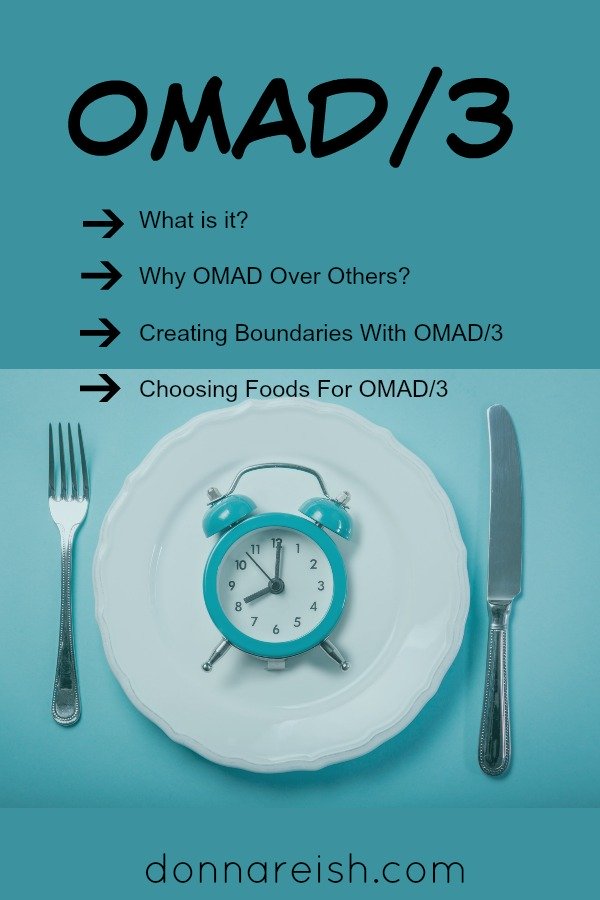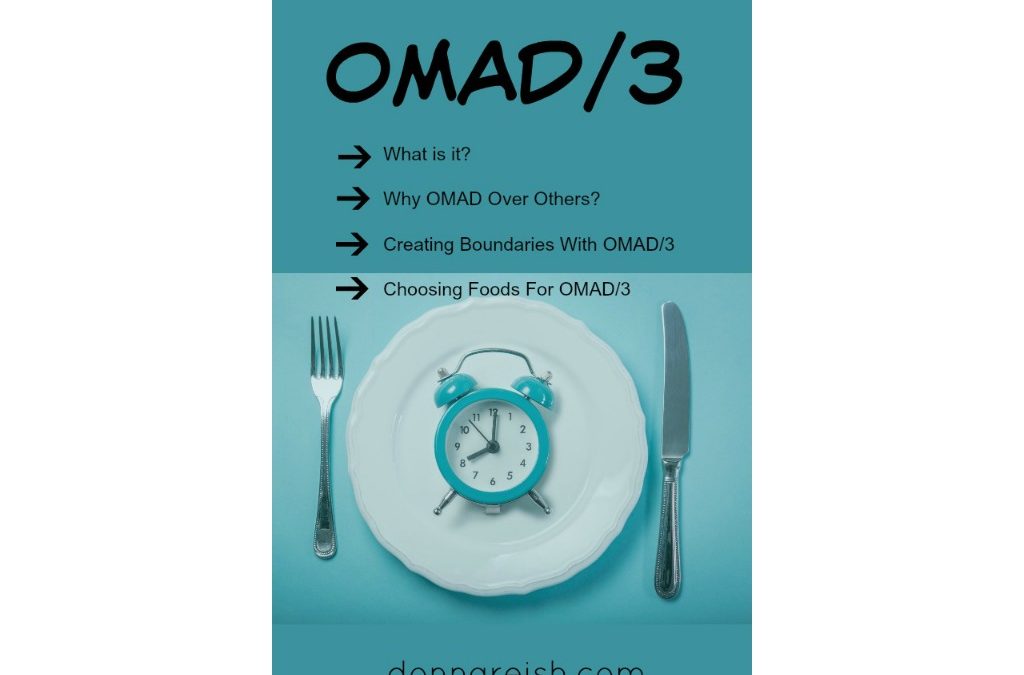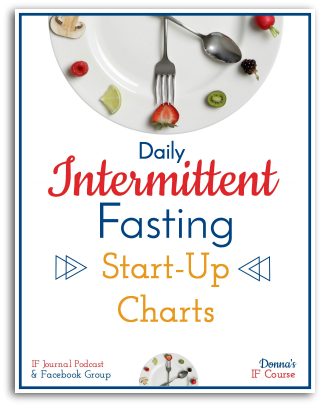
I recently announced in my free FB group that my husband and I have been switching to a more 2MAD approach to IF—-and extending our fasting window from 19 or 20 hours to averaging 18 hours.
This 2MAD (2 Meals a Day) is working well for us for a couple of reasons:
1) I like to be hungry when I eat. I feel that it is a healthier approach to weight management. With a shorter eating window, I was eating when I wasn’t fully hungry in order to get more food in so I wouldn’t get the hangries the next day after my work out. Extending the eating window to six hours lets me get hungry more fully.
2) 2MAD is helping me look at more real food—and less snack food. I know it semantics, but I like thinking of my food as two medium meals, not snacks and a more “eat a such as I want” approach. Just works better for me.
(See if 2MAD might be good for you in this recent Fast Shot video I created. )
But in the course of talking about 2MAD, I was surprised how many people hadn’t seen my teaching on OMAD, and many didn’t fully understand how to implement OMAD—though they wanted to. So here are some OMAD tips and info for you!
OMAD is a popular abbreviation for a Daily Intermittent Fasting (IF) protocol known as “One Meal a Day.” (Some people pronounce it Oh/Madd. I love abbreviations and cutesy names, so I’m all about the Oh/Madd!) There is a lot of confusion about exactly what this term means.
In social media groups, diehard “one plate of food” during “one half an hour period of time” people say that it isn’t true OMAD if you eat a snack during your eating window or you eat anything besides that one plate of food.
Others say that OMAD means you have an eating window of somewhere between one hour and five hours in length—and you can have a snack or appetizer to open your window and then eat your meal and dessert later.
It should be noted that there is another abbreviation, OPAD—One Plate a Day—for those who truly eat one plate of food every day within a thirty minute (or so) time period.
Let me leave you with some OMAD tips:
1) What Is OMAD/3?
OMAD/3 is a shortened form that I created for the concept of thinking of your eating window in three parts. Many OMAD’ers automatically do this without thinking—but the curriculum writer/teacher in me wanted to create a catch phrase for it!
Thus, OMAD/3 is One Meal a Day divided by 3.
(Teacher’s Note: Remember the fraction symbol means divide. Smile….)
This means that the eating window is broken up into three “eating parts”: (1) Appetizer/salad/snack to open the eating window; (2) Main entrée a couple of hours later (depending on how long the eating window is); (3) Dessert (or snack) before closing the eating window if/when desired.
2) Why OMAD Over Others?
Generally speaking, we lose weight with Daily IF through eating less food (creating a caloric deficit), putting our body into fat burning each day during the fasting period, and re-distributing our body’s composition into a leaner-looking physique through losing body fat and holding onto muscle. (Yay us!)
A person can lose weight with a different Daily IF protocol, such as a shorter fasting window/longer eating window of 16:8 or 17:7. However, these plans will usually involve two meals rather than one meal and may even add an extra snack in there.
Thus, a 16:8 protocol would not be OMAD but could result in two meals and two or three snacks/desserts. Typically, when someone does two meals a day to lose weight, that person will also do the keto diet, low fat diet, or some other “calorie” or “carb-controlled” eating protocol along with Daily IF to achieve weight loss since they can’t count on that time period/number of eating instances to automatically create a calorie deficit (and they may not be that far into fat burning depending on what they ate yesterday). (Again, see my 2MAD video!)
3) Creating Boundaries With OMAD/3
OMAD/3 is especially helpful for two types of people:
A. The first people who are helped with this are those just starting out with Daily IF who have not gotten into “Appetite Correction” yet. Appetite Correction (AC) happens a couple to a few weeks into consistent Daily IF—sometimes sooner. It is when you naturally get full and/or want to stop eating before you overeat. It is one of the amazing benefits of Daily IF.
Before AC begins, however, a new faster might find themselves “eating everything that isn’t nailed down.” OMAD/3 gives people built-in boundaries without their having to count calories or macros before AC sets in and helps them naturally eat less.
C. The second group of people who are helped with OMAD/3 are those who are not eating low carb or keto/do not want to count anything except for time. It is a natural boundary for food that can help us keep the amountof food we consume in check when we don’t want to consider the type of food (i.e. low carb, high fat, low calorie, etc.).
4) Choosing Foods for OMAD/3
One of the things that many people love about Daily Intermittent Fasting is the freedom to eat whatever they want—oftentimes for the first time after many years of attempted dieting and deprivation. (Daily IF is “short term sacrifice for long term success”!)
So if we can eat whatever we want during IF, why is this a point titled “Choosing Foods for OMAD/3”? I am thrilled to be teaching IF from the standpoint of eating whatever you enjoy. It is much-needed and long-awaited for many of us 40-60 year olds who have struggled with dozens of diets throughout our adult lives.
However, I like to teach three benchmarks for choosing your foods during OMAD/3:
A. Getting nutrition in (i.e. fruits, veggies, and proteins for sure!);
B. Feeling great (no carb comas, brain fog, or tummy troubles); and
C. Eating what you enjoy. For me, this means that on most days, I open my window with a snack/appetizer/salad this is nutrient-dense—salad, soup, cheese and carb crackers, leftover meat, green beans, nuts, etc. This isn’t a hard and fast rule. I just know that I will feel great until my meal (which is whatever I want to eat that doesn’t make me feel bad) AND I won’t crave foods while I’m waiting for my meal (since real foods do not make me crave). Then I have my meal and oftentimes a dessert of my choice—one dessert!
Hope this helps you on this—there are various approaches, windows, etc. Keep trying til you find what works for you!
Let’s “feel great and live well,”
Donna
P.S. Want more teaching—especially about weight management and controlling your thoughts? Check out my Daily Donna on my personal FB profile.











